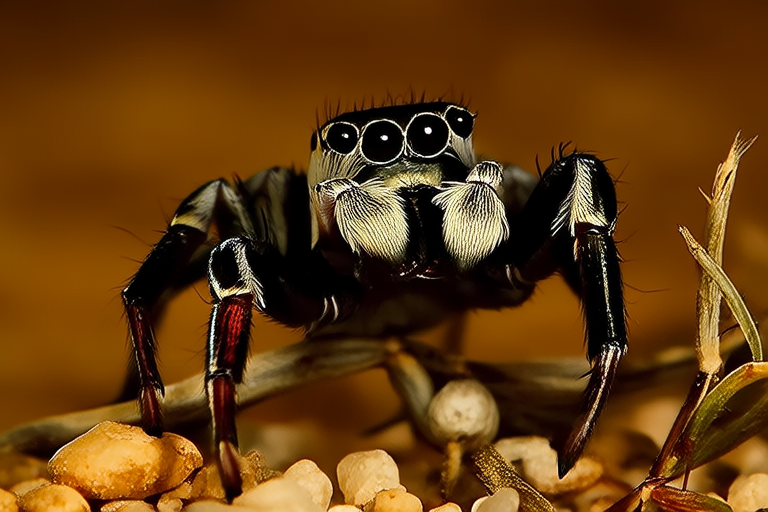Top 10 Fascinating Facts About Tarantulas That Will Amaze You
Tarantulas are often misunderstood creatures, typically associated with fear and danger. However, these eight-legged wonders are far more fascinating than they are frightening. From their unique abilities to their surprising behaviors, tarantulas have a lot to offer in terms of intrigue and amazement. Let’s dive into the top 10 fascinating facts about tarantulas that will leave you in awe.
- They’re Not as Dangerous as You Think: While many people are afraid of tarantulas due to their large size and intimidating appearance, most species are harmless to humans. Their venom is mild and comparable to a bee sting. In fact, out of over 900 tarantula species, only a handful are considered potentially dangerous to humans, and even then, the effects are usually localized pain and swelling. The Brazilian wandering spider is one exception, known for its potent neurotoxin, but this species is not commonly encountered outside of South America. (Source: National Geographic)
- The Silk Spinners: Tarantulas are master weavers of silk, which they use for various purposes beyond just creating webs. They spin silk from specialized spinnerets located at the rear of their abdomen. This silk is used to line their burrows, create egg sacs, and assist in wrapping prey. Interestingly, some tarantulas also use silk to create draglines, which help them navigate and escape predators. These draglines can also serve as communication tools, leaving behind scent trails for other tarantulas. (Source: BBC Earth)
- Camouflage Experts: Tarantulas have evolved to blend seamlessly into their environments, making them masters of disguise. Many species sport earthy tones such as browns, grays, and greens, while others have patterns that mimic bark or rocks. Some tarantulas even have tufts of hair on their legs and bodies that resemble plant matter, further enhancing their camouflage abilities. This adaptation allows them to ambush prey effectively and avoid detection by potential predators. (Source: Smithsonian Magazine)
- Hairless Defenses: If camouflage isn’t enough, tarantulas have another trick up their sleeves—literally. Certain tarantulas possess urticating hairs on their abdomens. When threatened, these spiders flick these hairs at attackers. The hairs contain microscopic barbs that can cause irritation, rashes, and even temporary blindness if they come into contact with the eyes. This defense mechanism is particularly effective against small mammals and birds, which are among the primary predators of tarantulas. (Source: Live Science)
- Remarkable Lifespans: Tarantulas are among the longest-lived arachnids, with some species living up to 30 years in captivity. Females tend to live longer than males, partly because males die shortly after mating. In the wild, their lifespan may be shorter due to predation and environmental factors. Despite their long lives, tarantulas grow slowly, taking several years to reach maturity. This slow growth rate contributes to their impressive longevity. (Source: Animal Diversity Web)
- Vibrant Colors and Patterns: While many tarantulas are camouflaged to blend into their surroundings, some species display vibrant colors and striking patterns. For example, the pink toe tarantula has distinctive pink toes that stand out against its dark body. The zebra tarantula features bold black and white stripes, while the Mexican redknee tarantula sports bright red patches on its knees. These colors and patterns often play a role in mate selection and communication within species. (Source: Encyclopedia Britannica)
- Prehistoric Survivors: Tarantulas have been around for millions of years, surviving multiple mass extinctions. Fossil records show that tarantulas have existed since the Cretaceous period, approximately 145 million years ago. These ancient survivors have adapted to changing environments and continue to thrive in diverse habitats worldwide. Their resilience and adaptability are testaments to their evolutionary success. (Source: Journal of Arachnology)
- Social Behavior Among Solitary Creatures: Tarantulas are generally solitary creatures, but some species exhibit surprisingly social behaviors. For instance, certain species of tarantulas have been observed sharing burrows, especially during periods of heavy rainfall when flooding could force them out of their homes. Additionally, some tarantulas engage in communal feeding, where multiple individuals feed together on larger prey. This behavior is rare among spiders and highlights the complexity of tarantula social dynamics. (Source: Current Biology)
- Predatory Precision: Tarantulas are skilled hunters, relying on stealth and speed to catch their prey. They typically ambush insects, other arthropods, and sometimes small vertebrates like frogs and mice. Tarantulas use their powerful fangs to inject venom into their victims, paralyzing them before consuming them. Some species, like the Goliath birdeater, have been known to take down prey as large as bats and small birds. Their hunting techniques demonstrate the versatility and adaptability of these formidable predators. (Source: National Geographic)
- Mating Rituals and Courtship: Tarantula mating rituals are elaborate and varied, often involving intricate dances and displays. Male tarantulas produce sperm packets called spermatophores, which they deposit onto a surface. The female then picks up the packet with her pedipalps (appendages near the mouth) and fertilizes her eggs. After mating, the female constructs an egg sac, which she guards fiercely until the spiderlings hatch. This protective behavior underscores the importance of parental care in tarantula reproduction. (Source: Animal Planet)
From their ancient origins to their remarkable adaptations, tarantulas are a testament to the diversity and ingenuity of nature. These fascinating creatures continue to captivate scientists and enthusiasts alike with their unique characteristics and behaviors. Whether you’re intrigued by their venom, their silk, or their social interactions, there’s always something new to learn about these amazing arachnids.
